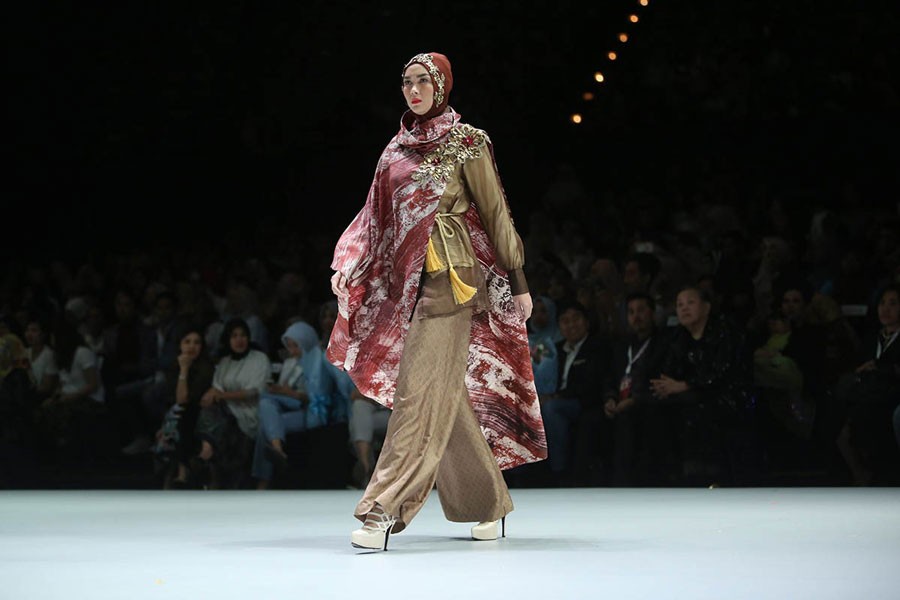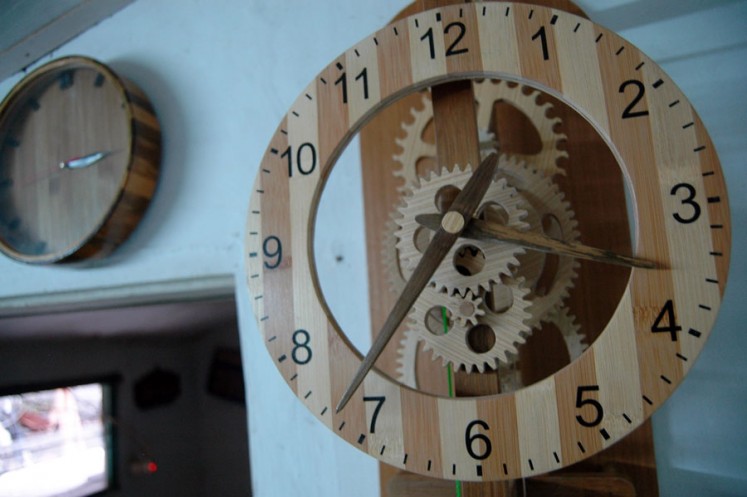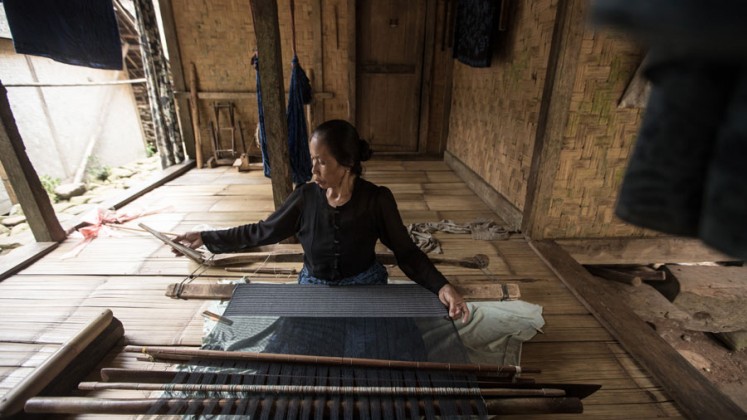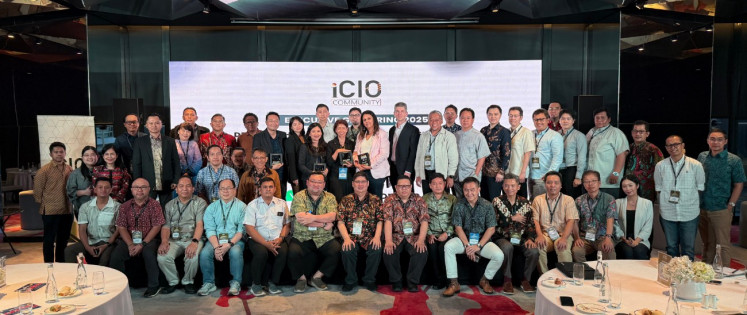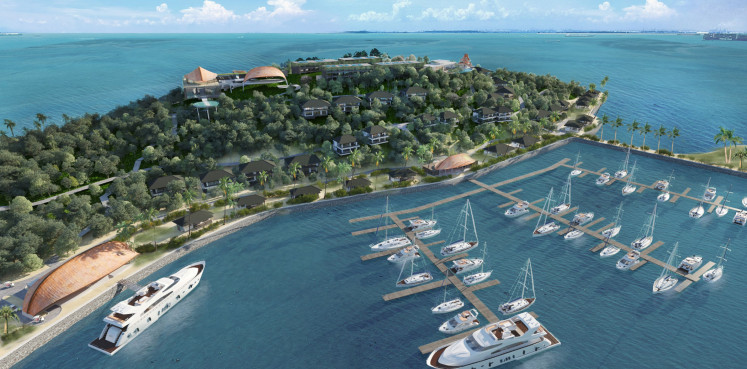Popular Reads
Top Results
Can't find what you're looking for?
View all search resultsPopular Reads
Top Results
Can't find what you're looking for?
View all search resultsFashion, crafts propel future economic growth
Change text size
Gift Premium Articles
to Anyone
Y
oung and veiled women who care about their appearance must recognize Muslim fashion boutique Dian Pelangi, named after owner Dian Wahyu Utami.
But in the past, Dian had a somewhat negative view of fashion.
She acknowledged that in her teenage years, she felt forced by her parent to take fashion as her major at SMK 1 Pekalongan in Central Java.
“Sometimes I cried every time I went home because some of my friends mocked me, saying that I would become a tailor,” said Dian.
But her views have since changed. Her creativity in utilizing traditional fabrics such as Pekalongan batik, songket (traditionally women textile) from Palembang and remnants of fabric have brought her to the international stage.
Dian received a warm welcome from fashion lovers in Paris at the Paris Fashion Week for Piece 2018, held on Oct.4.
And along with designers Barli Asmara, Catharine Njoo, Melia Wijaya and Vivi Zubedi, she showcased her work at New York Fashion Week: First Stage Spring Summer 2018.
Designers from Indonesia that appeared at the event have fulfilled the requirements set by International Management group as the organizer. The requirements are, among other things, originality, the power of concept and production capability.
Apart from Dian, local sneaker producers Exodos57 also stole the show, and were later showcased to President Joko “Jokowi” Widodo at the commemoration of Youth Pledge Day at the Bogor Palace last October.
The sneaker producers from Bandung showcased shoes that were made from leather, and blended with canvas and woven fabric from Yogyakarta.
The sneakers that President Jokowi observed are from the newest series that caries the theme ‘3Laborate,’ referring to a collaboration between three brands, namely Exodos57, UnionWell and Rawtype Riot.
The combination proved that newly designed modern shoes can represent the identity of Indonesia through woven fabric from Yogyakarta.
“The fashion, culinary and handicrafts sectors are already a big industry that we want a piece of. There are also others areas we set as a priority to develop, namely games, application, music and film,” said creative economy agency Bekraf head Triawan Munaf, at the Forum Merdeka Barat 9 (FMB9) gathering event at the Presidential Staff Office on Nov.14.
“In the future, the economy will not merely depend on natural resources,” Triawan said.
Data from Bekraf shows that the contributions made by the creative industry was recorded at Rp 784.82 trillion in 2014, an increase of 8.6 percent from the Rp 852 trillion recorded in 2015.
“Of the total contribution, the culinary, crafts and fashion sector have made the largest contribution in the creative economy,” he added.
The culinary sector contributed 41.69 percent, followed by fashion at 18.15 percent and crafts at 15.7 percent. In addition, the film industry grew by 10.28 percent, music by 7.26 percent, arts and architecture at 6.62 percent and games at 6.68 percent.
Given the potential that the creative economy has, the government is determined to support the sector, as it is viewed as providing the most job opportunities for young people, especially women. Data from Bekraf shows that women account for 53.68 percent of the workforce in the creative economy.
Creative economy players also have access to banks to secure capital. In 2016, the creative economy secured Rp 7.699 trillion in capital from banks. The figure surpassed the target of only Rp 4.9 trillion.
Soto Diplomacy
It is expected that the creative economy will develop into an engine that Indonesia relies on to boost its position in the global market.
Bekraf said one of the steps to take is involving ambassadors that represent Indonesia in other countries.
Currently, Bekraf is developing various programs that need real support from a strong international network, such as diplomacy using soto (soup), coffee and woven fabric.
However, the success of culinary and fashion diplomacy requires active participation from the ambassadors representing Indonesia in promotional campaigns.
As a whole, Bekraf focuses on 16 creative economy sub-sectors including fashion, film, animation, the culinary sector, crafts, fine arts, performing arts, music, architecture, visual communication design, product design, application development and games, television and radio and photography.
The 16 sub-sectors are expected to propel national economic growth, contributing to the GDP, boosting exports and creating employment opportunities.
If the creative industry is developed well, then it is not impossible to see Indonesian success in the international scene regarding the creative economy, such as emulating South Korea and K-Pop.
“The creative industry has become our strength. If the industry is developed well, with young people given room to innovate and foster their creativity, then the outcome can be showcased to the outside world,” said President Jokowi after watching music festival, “We The Fest” at JIExpo, Kemayoran, Central Jakarta on Aug.11.

